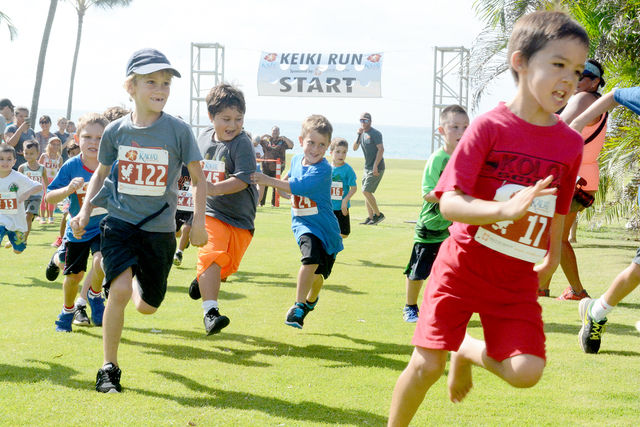LIHUE — In the country’s annual health checkup, Hawaii ranks first this year when compared with other states, according to United Health Foundation’s America’s Health Rankings annual report. The report’s national data show that in 2015, Americans are making progress
LIHUE — In the country’s annual health checkup, Hawaii ranks first this year when compared with other states, according to United Health Foundation’s America’s Health Rankings annual report.
The report’s national data show that in 2015, Americans are making progress on key health metrics including smoking less and leading less sedentary lives, but rising rates of drug deaths — including deaths from illegal drug use and prescription drug abuse — obesity, diabetes and children in poverty signal serious challenges ahead.
United Health Foundation produces the America’s Health Rankings annual report to provide actionable, data-driven insights that stakeholders can use to effect change.
“Hawaii’s top ranking as the healthiest state in the nation once again this year is very encouraging and reminds us of how fortunate we are to live in the Aloha State,” said Gov. David Ige. “Even with this ranking, we cannot afford to be complacent and we must continue to invest in our public health efforts to ensure access to care and strengthen prevention measures.”
Bev Brody, director of Get Fit Kauai, was pleased the report ranked Hawaii so well and that smoking and physical inactivity were declining. But she also had some reservations and noted that obesity and diabetes are on the rise.
According to the Behavioral Risk Factor Surveillance System by the Centers for Disease Control and Prevention, more than half of Kauai’s adult population is overweight or obese and more than 25 percent get no physical activity in an average week. Additionally, more than 80 percent on Kauai are not eating five servings of fruits and vegetables a day, the amount that is recommended.
“If we really want to rank healthiest state in the nation I think as a community, we need to change the way we do business and start changing policies that support healthier, active living,” Brody said.
Virginia Pressler, director of the Hawaii Department of Health, said while Hawaii ranks as the healthiest state, it needs to remember that it is being compared to a nation that has been transformed over the last three decades with rising obesity and chronic disease rates.
“We need to diligently increase collaboration that will achieve optimal health equity for all people in Hawaii,” she said.
UnitedHealthcare and Optum watch America’s Health Rankings to better understand the health of individuals and communities across the nation and in Hawaii. UnitedHealthcare and Optum have programs that address the nation’s health challenges at a state level.
UnitedHealthcare’s efforts include supporting local health and community events throughout the islands for children, families and seniors.
“For the last 26 years, the America’s Health Rankings Annual Report has provided a comprehensive picture of the challenges and opportunities facing Hawaii’s health, and where we stand against our peer states and the nation at large,” said Ron Fujimoto, D.O., chief medical officer, UnitedHealthcare Community Plan of Hawaii. “We look forward to using this year’s report to continue identifying best practices that address Hawaii’s most pressing health challenges and encourage our residents to lead the healthiest lives possible.”
Brody said Get Fit Kauai is focusing its efforts and resources to facilitate community health objectives by working with public policymakers and community leaders.
“By focusing on our community’s built environment, safer routes for children to walk and bicycle to school, increasing access to fresh, local fruits and vegetables, and healthier workplaces, we believe we can reverse the negative population health trends here on Kauai,” she said.
Brody said there is research that shows the general connection between features of a community’s built environment and the growth in chronic health conditions, especially those tied to obesity, lack of physical activity and poor nutrition.
From a public infrastructure perspective, she said one of the top and immediate priorities is more pedestrian walkways and bicycle paths on Kauai.
The general expectation is, and a large body of research has shown, that people who live in mixed residential and commercial use neighborhoods with pedestrian pathways walk more and, thus, get more daily exercise, Brody said.
She added that research documents that residents who live in neighborhoods where they must depend on cars for transportation have reduced physical activity and increased obesity rates.
“Rates of physical inactivity are reaching epidemic levels on our island, putting individuals at risk for obesity and associated health problems,” she said.


